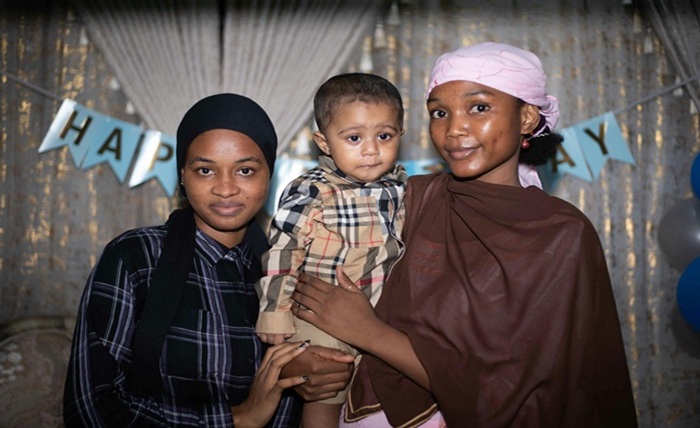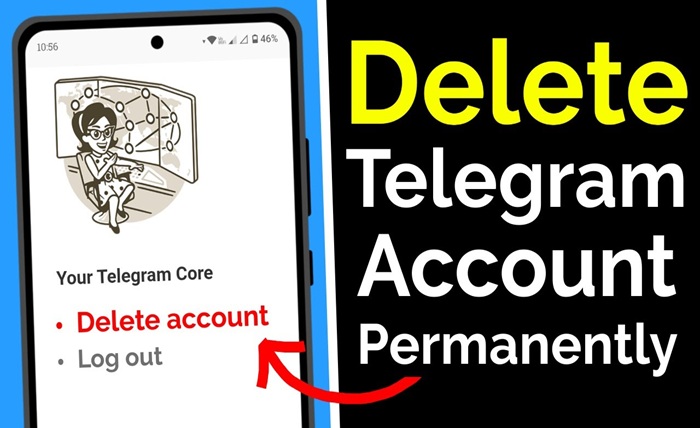Sister Hentai: A Deep Dive into Taboo, Fantasy, and a Defining Subgenre
Introduction
The term “sister hentai” is one of those phrases that instantly conjures a specific, and for many, a controversial image. It is a subgenre within the vast universe of hentai (Japanese animated pornography) that focuses on sexual relationships, often taboo and consensual, involving siblings, specifically sisters. To the uninitiated or the critical outsider, it can be easily dismissed as mere fetishistic pandering or a disturbing normalization of incestuous themes. However, to simply write it off as such is to ignore the complex cultural, psychological, and narrative underpinnings that make this subgenre one of the most persistent and popular categories within hentai. This deep dive aims to move beyond the surface-level shock value to explore the origins, appeal, variations, and societal reflections inherent in sister hentai, acknowledging its contentious nature while seeking to understand its role within the broader context of anime and manga culture.
Defining the Genre: What Exactly is Sister Hentai?
At its core, sister hentai is a niche category of hentai where the central erotic theme revolves around a sisterly figure. This definition, while seemingly straightforward, is incredibly flexible. The “sister” in question is not always a biological sibling. The genre broadly encompasses step-sisters, adopted sisters, childhood friends who are considered “like sisters,” and even magical or android beings created in a sister-like role. This elasticity is crucial because it allows creators to navigate the taboo of incest while still leveraging the powerful emotional and relational dynamics that the “sister” archetype provides. The narratives can range from romantic and consensual to coercive and dubiously-concentual, often featuring common character tropes like the innocent and caring imouto (little sister), the dominant and teasing onee-san (big sister), or the aggressive and possessive ane (a more mature term for sister). Understanding that sister hentai is less about strict biological reality and more about the role and relationship dynamic is the first step to analyzing its appeal.
Cultural Context: The Imouto Complex in Japanese Media
The prevalence of sister hentai cannot be divorced from its cultural context, primarily the “imouto complex” (or “imocom”) in Japan. This concept refers to a romantic or affectionate obsession with little sisters, which is a recurring theme in mainstream anime, manga, and light novels long before it reaches hentai. Countless non-hentai series feature a protagonist with a sister who possesses borderline romantic feelings for him, often played for comedy or light drama. This normalization of the imouto archetype in popular media creates a fertile ground for hentai to explore these relationships to their explicit conclusion. Furthermore, Japan’s historical and social structures, with their emphasis on family honor and private versus public behavior (honne and tatemae), create a space where taboo fantasies can be explored in media as a safe outlet for desires that are strictly forbidden in reality. Therefore, sister hentai is not an anomaly but rather an exaggerated extension of a trope that is deeply embedded in modern Japanese otaku culture.
The Psychology of Appeal: Why is Sister Hentai So Popular?
The popularity of sister hentai is multifaceted, tapping into several psychological and narrative elements that resonate with audiences. Firstly, it leverages the forbidden fruit syndrome; the taboo nature of the relationship itself creates a powerful source of tension and excitement. The act of transgressing a major social boundary is inherently thrilling in a fantasy context. Secondly, it builds on pre-established intimacy and familiarity. A story doesn’t need to spend time building a relationship from scratch; the characters already share a deep, lifelong bond. The fantasy lies in transforming that existing, safe intimacy into a passionate, erotic one. This bypasses the awkward “getting to know you” phase and jumps straight to the exploration of a forbidden love. For some consumers, it may also tap into nostalgia, idealization of youth, or a desire for unconditional acceptance and love, which a sister character often embodies in these narratives. The appeal of sister hentai is, therefore, a complex cocktail of taboo excitement, narrative efficiency, and emotional fantasy.
Common Tropes and Archetypes in Sister Hentai
Like any genre, sister hentai relies on a set of recognizable tropes and character archetypes that audiences have come to expect. The most common is the “Imouto” (Little Sister), who is often portrayed as sweet, innocent, secretly in love with her brother, and sometimes surprisingly possessive. Her opposite is the “Onee-san” (Big Sister), who is typically more mature, confident, and takes on a teasing, dominant, or even aggressive role in initiating the relationship. She might use her maturity to seduce or guide her younger brother. Another frequent trope is the “Childhood Friend Who is Like a Sister,” a character who blurs the lines between familial and romantic love. Plot tropes often include the “accidental” discovery of feelings, being walked in on in a compromising situation, “practice” for a real relationship, or the use of a pretext like a cold or nightmare to initiate physical contact. These recurring patterns provide a familiar framework for both creators and consumers, making each new story within the sister hentai genre feel both new and comfortingly predictable.
The Step-Sister Loophole: Navigating Censorship and Taboo
A significant and often joked-about trend within Western-oriented hentai platforms is the overwhelming abundance of “step-sister” content. This serves as a fascinating cultural loophole. By making the siblings non-blood-related, creators can technically sidestep the most severe incest taboo while preserving all the thrilling dynamics of the sister hentai genre. The narrative often involves a newly blended family, where a brother suddenly finds himself living with an attractive step-sister. The tension arises from their forced proximity and new familial roles, which they are more willing to break because of the lack of a blood relation. This allows for stories that feel transgressive—they are still siblings in name and social structure—but are morally palatable to a wider audience that might be put off by actual incest. This loophole demonstrates the genre’s adaptability and its understanding that the core fantasy is about the role and relationship, not the genetics.
Ethical Considerations and Critical Perspectives on Sister Hentai
It is impossible to discuss sister hentai without addressing the significant ethical debates it sparks. Critics argue that it normalizes incestuous relationships, potentially desensitizing viewers to a serious real-world taboo and harmful dynamic. They express concern about the portrayal of coercive or manipulative relationships where power dynamics within a family are exploited for sexual gratification. Furthermore, the genre often features characters who are minors, compounding the ethical issues with the problem of sexualized underage characters. Defenders, however, often invoke the concept of fantasy versus reality. They argue that consuming fictional media, no matter how taboo, does not equate to endorsing real-world actions. For them, sister hentai provides a safe outlet to explore forbidden fantasies without causing any harm, functioning as a form of catharsis. This debate mirrors larger discussions about art, pornography, and their potential effects on society, with no easy answers. Responsible consumption involves critical engagement and an understanding of the clear line between fictional fantasy and real-world morality and law.
Notable Works and Influential Creators in Sister Hentai
The sister hentai genre is vast, but certain works and artists have left an indelible mark. While specific titles are often best known by their Japanese names or creator circles, certain patterns emerge. Many influential works come from renowned hentai manga artists like Homunculus, whose stories often feature complex psychological narratives alongside explicit content, sometimes involving sisterly relationships. Another notable name is Sanbun Kyoden, an author/artist known for lengthy narrative-driven hentai manga that frequently explore imouto themes with a mix of romance and comedy. In the world of animated hentai (OVA series), studios like Pink Pineapple and MS Pictures have produced countless titles centered on sister characters, often adapting popular eromanga. These works range from short, purely titillating episodes to longer series that attempt to build a more compelling story around the central taboo relationship, demonstrating the genre’s range from simple fantasy to attempted narrative depth.
Conclusion
The world of sister hentai is a complex and multifaceted one, far exceeding its simplistic label as a mere taboo fetish. It is a genre deeply rooted in specific cultural tropes like the imouto complex, powered by the psychological appeal of forbidden love and pre-established intimacy, and adaptable enough to create loopholes that broaden its audience. It thrives on familiar archetypes and narratives, providing a predictable yet thrilling fantasy experience for its consumers. While it rightly faces serious ethical criticism regarding its themes and content, it also exists within the broader context of fantasy media, where consumers often compartmentalize fiction from reality. Ultimately, sister hentai serves as a compelling case study in how anime and manga explore taboo subjects, using the veil of fiction to examine the boundaries of relationships, desire, and societal norms. Understanding its nuances offers a deeper insight into not just a niche pornographic category, but into the driving forces of fantasy, storytelling, and culture itself.
FAQs
1. Is enjoying sister hentai the same as supporting real incest?
No, most consumers and psychologists differentiate between fantasy and reality. Enjoying a fictional narrative does not equate to endorsing or desiring that scenario in real life. Fantasy serves as a safe outlet for exploring taboos without causing harm.
2. Why is the “step-sister” theme so common now?
The step-sister theme acts as a loophole, maintaining the exciting taboo dynamic of a forbidden familial relationship while removing the barrier of blood relation, making it more palatable to a wider audience and sometimes easing platform content restrictions.
3. Are the characters in sister hentai always underage?
Not always, but it is a common and problematic trope. Many series feature characters who are explicitly high school age or older. However, the genre does frequently sexualize characters who are minors, which is a significant point of ethical contention.
4. Is sister hentai only popular in Japan?
While it originated and is most prevalent in Japanese media, the popularity of anime and hentai globally has made sister hentai a well-known and consumed subgenre by international audiences, reflecting universal, though often repressed, taboo fantasies.
5. What’s the difference between a “onee-san” and an “imouto” in sister hentai?
The key difference is in the dynamic. An “imouto” is a little sister, often portrayed as cute, innocent, and needing protection. A “onee-san” is a big sister, typically portrayed as more mature, confident, and often taking a more dominant or initiating role in the sexual relationship.






